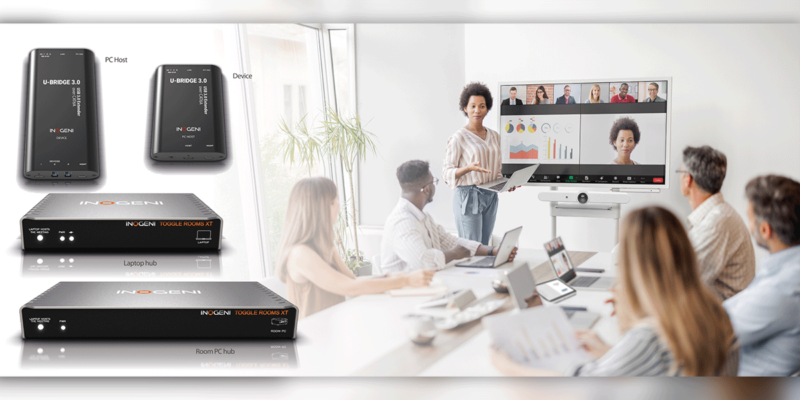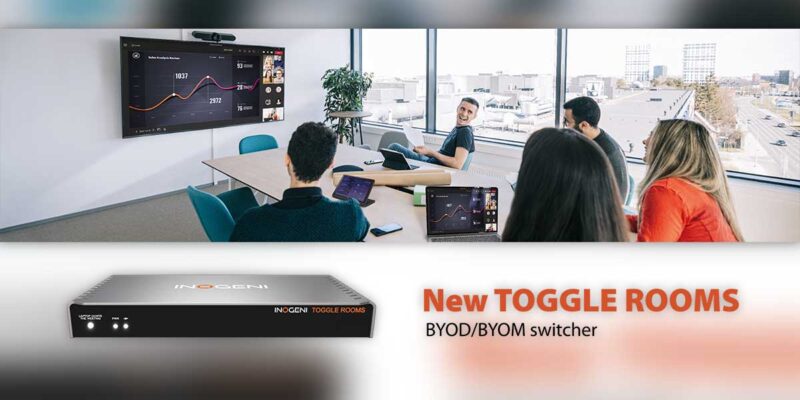Easy as Pie: Simplifying Your User Controls

By Phil Bridges, CTS-D
AV-Tech Media Solutions
In a world where the majority of meetings are held in a hybrid format, conference rooms are being utilized for video meetings almost every day. This means that these spaces have to function as video studios as well as in-person meeting spaces, requiring technology that may be more difficult for some employees to handle whether they are less tech-savvy, spend little time in the office or are simply new to the company.
Making work a more enjoyable experience for your employees is as easy as simplifying your user controls — but how can you get started? Here are some practical considerations executives and office managers need to make about their spaces, starting with a classic question.
Is there such a thing as too much tech?
In short, yes. The core problem causing users to be overwhelmed by tech in a space is rarely one of quantity, but rather how the interface is set up. If a “small” amount of tech is difficult to operate, employees may not use it and will be resistant to adding more. Conversely, if a large amount of tech is easy to use, employees will be comfortable utilizing it and even be open to further additions.
Clients rarely complain that they want to add more technology if they are struggling with what’s already present. The most common challenge presented by technology is its learning curve — conference rooms in particular are a setting that some employees use only occasionally, so installing state-of-the-art technology will be of little use if the end users don’t know how to operate it.
This does not mean that every conference room should be spartan. A solution that works particularly well for a hybrid workforce is the “BYOD” or “Bring-Your-Own-Device” model, in which employees use their own devices to connect to existing infrastructure. This is a winning formula for more than one reason: Employees work more efficiently on devices with which they are comfortable — and are more mobile if not tied to a conference room or desk for the whole day, which encourages collaboration and a sense of company culture.
The BYOD model also allows businesses to allocate more time and funds to create spaces that are every bit as functional as they are flashy. Conference room technologies require more than just installation — from planning to training to troubleshooting, businesses must have the resources available for near-constant support.
Concentrating any “complicated” technology in key spaces allows for a more manageable division of resources. In a typical enterprise organization, only a core group of individuals is trained on the in-depth elements of the technology (as I like to call it, on the stuff they can break). Smaller groups are trained on how to use the space and major troubleshooting.. This is a less-involved and cost-effective solution for employees who largely work from their own device but may need to use the conference room for a presentation or meeting.
Training employees on your conference room technology is half the battle — the other half is ensuring that you have all the elements needed for successful video calls no matter where the participants are located.
What Makes a Good Conference Room?
The answer to this question begins long before end-user technology is ever installed. In the design phase, working with an architect who understands how the room will be used will have an effect on the materials and layout of the room itself. A good conference room will avoid materials that cause sound reverberation, such as marble and glass, or will incorporate acoustic panels to mitigate their effect.
If the design phase has long since passed, a sound-masking system that emits a constant, low level of ambient noise actually makes speech sound clearer by masking much of the reverberation and sounds that may be leaking in from outside the conference room. Audio is absolutely critical: A call with no video is one thing, but a call with no audio is a failed meeting.
Adequate space for cameras, speakers and microphones is also essential. A common downfall of hybrid calls is that all in-room participants can see and hear each other clearly, while remote participants struggle to hear everything happening in the room. Conversely, in-room participants may struggle to hear what their remote coworkers are saying if the audio is broadcasting from a single computer at the other end of the room. The number of speakers and microphones required will depend on the size of the conference room. There are options for every budget and room size from multiple, strategically placed devices to a single but powerful soundbar placed below the screen.
From a visual standpoint, there are several ways to create an “in-person” feeling for everyone involved. Cameras that capture a 180-degree angle will show a conference room in its entirety, while remote-control operated pan-tilt-zoom cameras offer multiple perspectives, the ability to zoom in and automatic speaker tracking. If new hardware isn’t in the cards, videoconferencing platforms like Microsoft Teams and Zoom offer AI-powered tools that allow all participants to see each other in a shared virtual space. The software layers each video feed over a shared background like an office, coffee shop, or courtyard to create a virtual world in which participants are seated next to each other — the ideal choice for anyone looking to connect with clients or coworkers in a more engaging setting.
No matter which hardware or software works best for your office, the most important part of implementation is end-user education. Employees should not only know what’s in a space and how to operate it, but also exactly what they can expect out of each room. This will allow them to choose the correct space for their needs and know when they’ll require external assistance — saving them a headache and your business valuable time.





